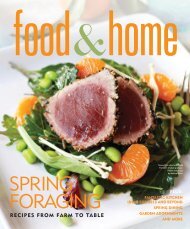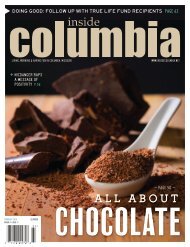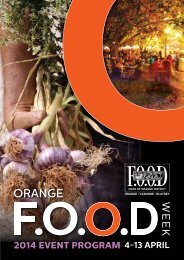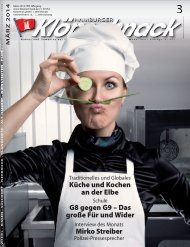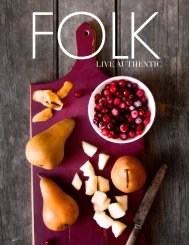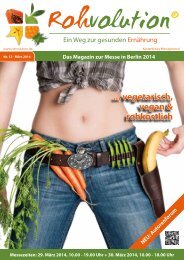CHAMPAGNE
Translation : Florence Brutton — Crédits photos : Couverture : Jean-Philippe Baltel/Sipa Press – Pages 4 et 5 : Michel Guillard, Carte Empreinte Studio – Pages 6 et 7 : Fulvio Roiter, Philippe Maille, Michel Guillard, Olivier Frimat, Visuel Impact – Pages 8 et 9 : CIVC, Yvon Monet – Pages 10 et 11 : Michel Guillard, Alain Cornu – Pages 12 et 13 : CIVC, Frédéric Hadengue – Pages 14 et 15 : CIVC, Michel Guillard, John Hodder – Pages 16 et 17 : John Hodder, Jean-Philippe Kahn, dessins INAO – Pages 18 et 19 : CIVC, John Hodder, Alain Cornu – Pages 20 et 21 : John Hodder, Fulvio Roiter – Pages 22 et 23 : John Hodder, Alain Cornu, schéma CIVC – Pages 24 et 25 : Alain Cornu – Rohrscheid – Pages 26 et 27 : Alain Cornu, Gérard Rondeau – Pages 28 et 29 : Hervé Chevron, Alain Cornu, Patrick Guérin – Pages 30 et 31 : Alain Cornu, Michel Guillard, Rohrscheid – Pages 32 et 33 : Alain Cornu, Philippe Maille, Piper Heidsieck – Pages 34 et 35 : Alain Cornu, Huyghens-Danrigal, Kumasegawa – Pages 36 et 37 : Visuel Impact, Eric Cuvillier/Jacques de Marcillac • Création graphique, mise en page et impression : EMPREINTE Studio à Epernay • Imprimé en France en février 2010 pour le Comité Interprofessionnel du Vin de Champagne. Tous droits réservés © CIVC.
Translation : Florence Brutton — Crédits photos : Couverture : Jean-Philippe Baltel/Sipa Press – Pages 4 et 5 : Michel Guillard, Carte Empreinte Studio – Pages 6 et 7 : Fulvio Roiter, Philippe Maille, Michel Guillard, Olivier Frimat, Visuel Impact –
Pages 8 et 9 : CIVC, Yvon Monet – Pages 10 et 11 : Michel Guillard, Alain Cornu – Pages 12 et 13 : CIVC, Frédéric Hadengue – Pages 14 et 15 : CIVC, Michel Guillard, John Hodder – Pages 16 et 17 : John Hodder, Jean-Philippe Kahn, dessins INAO – Pages 18
et 19 : CIVC, John Hodder, Alain Cornu – Pages 20 et 21 : John Hodder, Fulvio Roiter – Pages 22 et 23 : John Hodder, Alain Cornu, schéma CIVC – Pages 24 et 25 : Alain Cornu – Rohrscheid – Pages 26 et 27 : Alain Cornu, Gérard Rondeau – Pages 28 et 29 :
Hervé Chevron, Alain Cornu, Patrick Guérin – Pages 30 et 31 : Alain Cornu, Michel Guillard, Rohrscheid – Pages 32 et 33 : Alain Cornu, Philippe Maille, Piper Heidsieck – Pages 34 et 35 : Alain Cornu, Huyghens-Danrigal, Kumasegawa – Pages 36 et 37 : Visuel
Impact, Eric Cuvillier/Jacques de Marcillac • Création graphique, mise en page et impression : EMPREINTE Studio à Epernay • Imprimé en France en février 2010 pour le Comité Interprofessionnel du Vin de Champagne. Tous droits réservés © CIVC.
Create successful ePaper yourself
Turn your PDF publications into a flip-book with our unique Google optimized e-Paper software.
<strong>CHAMPAGNE</strong><br />
from terroir to wine<br />
vignerons et maisons
<strong>CHAMPAGNE</strong> : from terroir to wine<br />
Translation : Florence Brutton — Crédits photos : Couverture : Jean-Philippe Baltel/Sipa Press – Pages 4 et 5 : Michel Guillard, Carte Empreinte Studio – Pages 6 et 7 : Fulvio Roiter, Philippe Maille, Michel Guillard, Olivier Frimat, Visuel Impact –<br />
Pages 8 et 9 : CIVC, Yvon Monet – Pages 10 et 11 : Michel Guillard, Alain Cornu – Pages 12 et 13 : CIVC, Frédéric Hadengue – Pages 14 et 15 : CIVC, Michel Guillard, John Hodder – Pages 16 et 17 : John Hodder, Jean-Philippe Kahn, dessins INAO – Pages 18<br />
et 19 : CIVC, John Hodder, Alain Cornu – Pages 20 et 21 : John Hodder, Fulvio Roiter – Pages 22 et 23 : John Hodder, Alain Cornu, schéma CIVC – Pages 24 et 25 : Alain Cornu – Rohrscheid – Pages 26 et 27 : Alain Cornu, Gérard Rondeau – Pages 28 et 29 :<br />
Hervé Chevron, Alain Cornu, Patrick Guérin – Pages 30 et 31 : Alain Cornu, Michel Guillard, Rohrscheid – Pages 32 et 33 : Alain Cornu, Philippe Maille, Piper Heidsieck – Pages 34 et 35 : Alain Cornu, Huyghens-Danrigal, Kumasegawa – Pages 36 et 37 : Visuel<br />
Impact, Eric Cuvillier/Jacques de Marcillac • Création graphique, mise en page et impression : EMPREINTE Studio à Epernay • Imprimé en France en février 2010 pour le Comité Interprofessionnel du Vin de Champagne. Tous droits réservés © CIVC.
<strong>CHAMPAGNE</strong><br />
from terroir to wine<br />
Contents<br />
4-5 • Geographical location<br />
6-7 • Climate<br />
8-9 • Soil and sub-soil<br />
10-11 • Champagne grapes<br />
12 • Mass selection and clonal selection<br />
13 • Planting<br />
14-15 • Sustainable viticulture<br />
16-17 • Pruning<br />
18-19 • Summer maintenance<br />
20-21 • Harvesting<br />
22-23 • Pressing<br />
24 • Clarification<br />
25 • alcoholic fermentation<br />
26 • Malolactic fermentation – Clarification<br />
27 • Blending<br />
28-29 • Bottling and second fermentation<br />
30-31 • Maturation on lees<br />
32 • Riddling<br />
33 • Disgorgement<br />
34 • Dosage<br />
35 • Final corking - shaking and final inspection<br />
36-37 • Labelling<br />
38-39 • Glossary<br />
vignerons et maisons
4<br />
Geographical<br />
location<br />
Vineyard in the Vallée de la Marne<br />
Geographical<br />
location<br />
The Champagne production<br />
zone (AOC vineyard area) is<br />
defined and delimited by the<br />
law of 22 nd of July 1927. It lies<br />
some 150 kilometres to the<br />
east of Paris, extending into<br />
the departments of the Marne<br />
(67% of plantings), Aube (23%),<br />
Aisne (9%), Haute-Marne and<br />
Seine-et-Marne. The zone<br />
stands at roughly 34,000 hectares<br />
of vineyards, spread across<br />
319 villages (‘crus’) of which<br />
17 traditionally rank as ‘Grands<br />
Crus’ and 44 as ‘Premiers Crus’.<br />
There are four main growing<br />
regions: the Montagne de<br />
Reims, Vallée de la Marne,<br />
Côte des Blancs and Côte des<br />
Bar. Together these encompass<br />
281,000 individual vineyard<br />
plots, each with an average size<br />
of around 12 ‘ares’ (1,200 square<br />
metres).<br />
Behind this mosaic of<br />
micro-vineyards lies a unique<br />
combination of natural factors.<br />
Climate, soil and topography<br />
have produced a region with<br />
almost as many geographical<br />
permutations as there are acres<br />
of vineyard. Making the most of<br />
that diversity is Champagne’s<br />
15,000-strong team of wellpractised<br />
winegrowers.
The Champagne wine-growing region<br />
N 31<br />
N 3<br />
N 4<br />
N 19<br />
N<br />
Château-<br />
SEINE ET<br />
MARNE<br />
D 6<br />
AISNE<br />
N 2<br />
YONNE<br />
D 967<br />
Grand Morin<br />
Aisne<br />
Ardre<br />
Vallée de la Marne<br />
D 236<br />
N34<br />
Verzy<br />
D18<br />
Fismes<br />
Vallée de<br />
l'Ardre<br />
A 4<br />
Surmelin<br />
Growing area<br />
Armançon<br />
Massif de<br />
Saint-Thierry<br />
Côte de Sézanne<br />
Montgueux<br />
‘chef-lieu’ (administrative centre)<br />
of the ‘canton’<br />
A6<br />
D 51<br />
D 386<br />
N 44<br />
Châtillonsur-Marne<br />
Dormans<br />
Thierry Épernay<br />
Charly-sur-Marne<br />
Ville-en-<br />
Tardenois<br />
Villenauxela-Grande<br />
Sézanne<br />
N 3<br />
A 26<br />
N77<br />
N 51<br />
Vertus<br />
N 19<br />
Aÿ<br />
Avize<br />
Aube<br />
SEINE<br />
AUBE<br />
Troyes<br />
0 5 10 km<br />
Reims<br />
Verzy<br />
MARNE<br />
N 51<br />
Montagne<br />
de<br />
Reims<br />
Côte<br />
des Blancs<br />
A5<br />
D 444<br />
N 4<br />
A 26<br />
D931<br />
D 3<br />
D960<br />
N 71<br />
D965<br />
N 44<br />
Barsur-Seine<br />
Les Riceys<br />
ARDENNES<br />
D977<br />
Vesle<br />
N19<br />
CÔTE D'OR<br />
A4<br />
N44<br />
MARNE<br />
D982<br />
D13<br />
Côte des Bar<br />
Essoyes<br />
N71<br />
Ource<br />
N4<br />
D982<br />
Aisne<br />
Châlons-en-Champagne<br />
Ornain<br />
Vitry-le-François<br />
Barsur-Aube<br />
HAUTE MARNE<br />
A5<br />
Mussy-sur-Seine<br />
The vineyards in Champagne are planted at altitudes of 90-300 metres, on predominantly south, east and southeastfacing<br />
slopes. Average gradient is around 12%, rising to nearly 60% in some areas.<br />
Champagne’s undulating to moderately steep terrain creates ideal vineyard sites that combine good drainage with<br />
optimum exposure to sunlight.<br />
Aube<br />
Geographical<br />
location<br />
5
6<br />
Climate<br />
Villedommange in winter<br />
Climate<br />
The Champagne region lies at the northernmost<br />
limit of vine cultivation (latitudes 49°5 and 48°<br />
North for Reims and Bar-sur-Seine respectively).<br />
It is distinguished by a dual climate that is subject<br />
to both continental and oceanic influences.<br />
Continental influences bring often-devastating winter frosts but also provide<br />
high levels of sunshine in the summer.<br />
Oceanic influences keep temperatures on the low side but also ensure steady<br />
rainfall, with no major fluctuations in temperature from year to year.<br />
Springtime in Boursault
Average annual temperature is just 11°C.<br />
The mean number of sunshine hours per<br />
year is 1,680, rising to 2,100 hours or<br />
more in certain years (1976 and 2003,<br />
for instance).<br />
This combination of weather influences makes for constant, moderate<br />
precipitation – a near-ideal pattern of rainfall that provides the vines with just<br />
enough water to produce quality fruit. Mean annual rainfall for the Champagne<br />
region as a whole is close to 700mm, ranging from 600mm to 900mm depending<br />
on the area.<br />
Summer and winter alike, the vineyards are at the mercy of variable weather.<br />
Winter frosts (on average 1.1 day a year of temperatures below –10°C, up to<br />
3 days in some places) can be severe enough to kill the vines. Likewise,<br />
spring frosts can destroy nascent leaves and buds, dramatically reducing<br />
yield potential (48% loss in 2003). June may bring cold, wet weather that<br />
interferes with flowering and fruit set, increasing the incidence of ‘coulure’<br />
(bud or berry drop) and ‘millerandage’ (stunted berries). Summer frequently<br />
sees violent thunderstorms that leave the vineyards riven with gullies.<br />
Hailstorms are another frequent menace, seriously damaging vines and<br />
grape clusters alike (in 2000, 31 separate bouts of hail wiped out yields<br />
across a 3,000-hectare area).<br />
Around Chouilly and Cramant in summer<br />
Hautvillers in autumn<br />
Climate<br />
7
8<br />
Soil and subsoil<br />
A chalk pit in Reims<br />
Soil and<br />
subsoil<br />
Chalky subsoil<br />
The subsoil in Champagne is predominantly<br />
limestone. Outcropping sediments are likewise<br />
composed of 75% limestone (chalk, marl and<br />
limestone proper). This type of terrain provides<br />
good drainage and also explains why certain<br />
Champagne wines have a distinctly mineral taste.<br />
Champagne’s extensive chalk deposits show as outcrops in the vineyard<br />
areas of the Côte des Blancs, Côte de Sézanne and Vitry-le-François, but are<br />
buried deep underground on the Montagne de Reims. Elsewhere, chalky soils<br />
give way to a greater proportion of marls, clays and sands, in the Vallée de la<br />
Marne (to the west of Châtillon-sur-Marne) and in the hills surrounding Reims<br />
(Saint-Thierry, Vallée de l’Ardre and Montagne ouest). Marls essentially take<br />
over in the Côte des Bar vineyards (Bar-sur-Aube and Bar-sur-Seine).<br />
The chalk in Champagne consists of calcite granules that are formed from<br />
the skeletal plates of coccolithopores (marine phytoplankton), and is<br />
characterized by the presence of belemnite fossils (marine invertebrates<br />
of the Mesozoic era). Being highly porous, chalk acts as a natural reservoir<br />
(holding 300 to 400 litres of water per m3), providing the vines with just<br />
enough water even in the driest summers.<br />
Chalk draws in water through capillary action. The effort required to tap<br />
into this water supply puts the vines under just enough water stress in the<br />
growing season to achieve that delicate balance of ripeness, acidity and berry<br />
aroma potential.
Lithological formations<br />
of the Champagne vineyard<br />
N<br />
Château-<br />
ierry<br />
Rock types<br />
Chalk<br />
Charly-sur-Marne<br />
Villenauxela-Grande<br />
Fismes<br />
Vallée de la Marne<br />
N 3<br />
Vallée de l'Ardre<br />
Hard and soft limestone,<br />
calcareous sands<br />
Marls (calcareous clays)<br />
Clays and argillaceous alluvium<br />
Siliceous sand<br />
Slope wash (composite rock)<br />
Massif de<br />
Saint-Thierry<br />
A 4<br />
Petit-Morin<br />
Grand-Morin<br />
Ville-en-<br />
Tardenois<br />
Dormans<br />
Surmelin<br />
Châtillonsur-Marne<br />
N 4<br />
Ardre<br />
Sézanne<br />
Côte de Sézanne<br />
Montgueux<br />
N 60<br />
N 44<br />
Vesle<br />
N 31<br />
A 26<br />
N 51<br />
Reims<br />
Aÿ<br />
Avize<br />
Vertus<br />
Verzy<br />
Épernay<br />
Troyes<br />
Marne<br />
N 51<br />
Vesle<br />
Côte des Blancs<br />
Bar-sur-Seine<br />
A 4<br />
Laignes<br />
Montagne<br />
de Reims<br />
N 44<br />
Seine<br />
N 4<br />
N 44<br />
N 19<br />
Vitryle-François<br />
Bar-sur-Aube<br />
Côte des Bar<br />
N 71<br />
Saulx<br />
A 5<br />
Aube<br />
Essoyes<br />
Ource<br />
Les Riceys Mussy-sur-Seine<br />
Landion<br />
Soil and subsoil<br />
9
Champagne grapes<br />
10<br />
The Pinot noir performs best in cool<br />
limestone terrain and largely predominates<br />
in the Montagne de Reims and<br />
the Côte des Bar. It is the Pinot noir that<br />
adds backbone and body to the blend,<br />
producing wines with telltale aromas of<br />
red berries and plenty of character.<br />
Champagne<br />
grapes<br />
Montigny-sous-Châtillon vineyard<br />
It is the special nature of the Champagne<br />
terroir that determines the choice of plantings.<br />
Black Pinot noir and Meunier, and white<br />
Chardonnay now account for all but a fraction<br />
of the area under vine. Other approved<br />
varietals are the white Arbanne, Petit Meslier,<br />
Pinot blanc and Pinot gris – together less than<br />
0.3% of plantings.<br />
These small exceptions apart, the Pinot noir accounts for 39% of Champagne’s<br />
surface area, followed by the Meunier (33%) and the Chardonnay (28%).<br />
The Meunier is more robust and less<br />
prone to frost damage because it<br />
buds later. It is particularly well suited<br />
to the more clayey soils of the Vallée<br />
de la Marne and will tolerate the<br />
most adverse weather conditions. The<br />
Meunier adds roundness to the blend,<br />
producing supple, fruity wines that tend<br />
to age more rapidly than their Pinot noir<br />
counterparts.<br />
The Chardonnay is king in the Côte des<br />
Blancs, yielding delicately fragrant wines<br />
with characteristic notes of flowers,<br />
citrus and sometimes minerals. The<br />
Chardonnay is the ideal blend companion<br />
for wines that are built to age.
Château-<br />
ierry<br />
Main grape varieties by Champagne commune<br />
Charly-sur-Marne<br />
Villenauxela-Grande<br />
Fismes<br />
Vallée de la Marne<br />
N 3<br />
N<br />
Vallée de l'Ardre<br />
Chardonnay<br />
Meunier<br />
Pinot Noir<br />
Massif de<br />
Saint-Thierry<br />
A 4<br />
Petit-Morin<br />
Grand-Morin<br />
Ville-en-<br />
Tardenois<br />
Dormans<br />
Surmelin<br />
Châtillonsur-Marne<br />
N 4<br />
Ardre<br />
Sézanne<br />
Côte de Sézanne<br />
Montgueux<br />
N 60<br />
N 44<br />
Vesle<br />
N 31<br />
A 26<br />
N 51<br />
Reims<br />
Aÿ<br />
Avize<br />
Vertus<br />
Verzy<br />
Épernay<br />
Troyes<br />
Marne<br />
N 51<br />
Côte des Blancs<br />
Bar-sur-Seine<br />
A 4<br />
Laignes<br />
Montagne<br />
de Reims<br />
N 44<br />
Seine<br />
N 4<br />
N 44<br />
N 19<br />
Vitryle-François<br />
Bar-sur-Aube<br />
Côte des Bar<br />
N 71<br />
Saulx<br />
A 5<br />
Aube<br />
Essoyes<br />
Ource<br />
Les Riceys Mussy-sur-Seine<br />
Landion<br />
Champagne grapes<br />
11
12<br />
Mass selection and<br />
clonal selection<br />
Protection of a young rooted vine<br />
Mass selection<br />
and clonal<br />
selection<br />
These two methods provide Champagne winegrowers<br />
with the best available vines in terms<br />
of superior fruit (mass-selected vines) and<br />
disease-resistance (clonally selected vines).<br />
Ever since the phylloxera epidemic (late 19 th to early 20 th Century), vine stocks<br />
have been obtained from grafting together French and American vines. Vine<br />
selection depends on the terroir in question, but the favourite planting in<br />
Champagne today is the 41B (81% of plantings). Highly adaptable, the 41B<br />
will grow just about anywhere and particularly favours clayey soils. The<br />
SO4 prefers moderately limestone soils while the 3309C does best in soils<br />
containing very little limestone.<br />
Decades of research into vine selection<br />
give today’s Champagne winegrowers<br />
the choice of some 50 or so clones<br />
of the three approved AOC varietals.<br />
Pre-multiplication is carried out by the<br />
Comité interprofessionnel du vin de<br />
Champagne (CIVC), the industry trade<br />
association also responsible for the<br />
distribution of approved scions.<br />
Omega-shaped grafting
Planting<br />
The grubbing-up<br />
and replanting of vines<br />
(or the planting of<br />
new plots) must be<br />
notified to the authorities.<br />
Planting must<br />
take place before the<br />
end of May (or late July<br />
for plants in pots),<br />
following a period<br />
when the soil is rested<br />
and prepared.<br />
Champagne AOC<br />
wines may only<br />
be produced from<br />
the fruit of vines in<br />
their third year of<br />
growth (two years<br />
after planting).<br />
Nursery<br />
Regulations specify a maximum inter-row spacing of 1.5 metres and an<br />
intra-row spacing of 0.90-1.5 metres, total spacing being never more than<br />
2.5 metres. This produces an average planting density of roughly 8,000 plants<br />
per hectare, aiming to optimize fruit quality through high-density planting.<br />
The more the vines have to compete with neighbouring plants for water and<br />
nutrients, the smaller and better the crop load per vine. Another advantage<br />
of high planting density is that it favours the development of an optimal Leaf<br />
Area Index (LAI), so promoting photosynthesis.<br />
New plantings are subject to strict EU regulations, in accordance with fixed<br />
annual quotas for all wine-producing member countries. New planting rights<br />
are then distributed among the different wine-growing regions by the French<br />
Minister for Agriculture. The annual rights allocation for the Champagne<br />
region does not exceed 1% of the total area under vine.<br />
Planting : setting up of the vine stakes<br />
Planting<br />
13
14<br />
Sustainable<br />
viticulture<br />
The river Marne in Troissy<br />
Sustainable<br />
viticulture<br />
The environmental impact of the Champagne<br />
industry was assessed in a study conducted in<br />
the early 2000s. Based on those findings, there<br />
are four major issues for action:<br />
Cover crop<br />
Reduction of additives, and the control of risks to health<br />
and the environment.<br />
For more than twenty years now, the industry has been investing huge sums in research<br />
and development aimed at controlling the possible consequences of crop protection.<br />
The result today is a significant reduction in the quantities of pesticides used, and greater<br />
safeguards in the way we use them. Half of all the products now used in Champagne<br />
are approved for organic use. Champagne is among Europe’s leaders in the development<br />
of sexual confusion techniques – a natural alternative to chemical insecticides that can<br />
virtually eliminate pesticide use.<br />
The preservation and enhancement of terroir, bio-diversity<br />
and landscapes.<br />
Vineyard soils<br />
Protecting the soil against all forms of deterioration is a long-standing preoccupation in<br />
Champagne, with particular attention to the physical, chemical and biological properties<br />
of soil. Several initiatives have already been taken by the industry to protect and add<br />
value to its heritage. Examples include: the management of groundwater resources<br />
on slopes; the promotion of the ‘reasoned’ feeding of soil and vine; the development<br />
of decision-making tools; the drawing-up of guidance maps; and the increased use of<br />
cover cropping in and around vineyards.<br />
Data collected over the past 20 years (monitoring of earthworm populations and microflora)<br />
indicate that Champagne soils today enjoy an excellent level of biological activity.
Bio-diversity and landscapes<br />
The region is home to numerous areas of special ecological<br />
interest, where bio-diversity is maintained by the conservation<br />
of natural habitats.<br />
The overall focus here is to improve the ecological infrastructure<br />
of the vineyard (cover cropping between vines and across slopes,<br />
and the establishment of hedgerows); also groundwater management<br />
on slopes, with an eye to solutions that fit harmoniously<br />
within the landscape.<br />
The accountable management of water,<br />
effluent, by-products and waste<br />
Water management<br />
Champagne producers use various methods to reduce<br />
their consumption of water. These include: the eco-design<br />
or eco-refurbishment of buildings; improved systems of<br />
cleaning, recycling and/or collection; and reducing water<br />
wastage wherever possible. Water conservation remains a<br />
priority, meanwhile maintaining high standards of hygiene in<br />
pressing centres, cuveries (units housing the fermenting vats)<br />
and other work premises.<br />
Management of effluent<br />
Cellar hygiene relies on frequent cleaning, which in turn generates<br />
effluent-borne organic matter.<br />
Today, 92 per cent of effluents and liquid by-products are treated or<br />
processed for recycling. The target for the future is 100 per cent.<br />
Waste and by-products<br />
All of the waste and by-products of Champagne wine and grape<br />
production are processed for recycling.<br />
The ‘marc’ (or pommace) is delivered to authorised distilleries<br />
where it is broken down by separation and extraction. A wide<br />
range of compounds are recovered for recycling: ethanol for<br />
industrial use and motor fuel; grape-seed oil; polyphenols,<br />
anti-oxidants and natural colour pigments; tartaric acid with<br />
potential application in processed foods, cosmetics and human<br />
health products.<br />
Activities linked to Champagne production also generate<br />
around 10,000 tonnes per year of industrial-type waste:<br />
metals, wood, glass and packaging materials including plastic,<br />
paper and board.<br />
Today, 75 per cent of this waste is sorted and processed for<br />
recycling, aiming for 100 per cent recovery in the near future.<br />
The energy and climate challenge<br />
This is probably the biggest challenge facing mankind in the<br />
years and decades to come – and one addressed by the Champagne<br />
region long before the passing of legislation. In early<br />
2003 the carbon footprint of the industry was assessed as a<br />
whole, launching the Champagne Climate Plan soon afterwards<br />
to demonstrate the solidarity with future generations.<br />
That Plan today encompasses five main focus areas, 16 research<br />
and development programmes and more than 40 individual projects<br />
either underway or in the pipeline. The main fields of action<br />
are: buildings/installations; viticultural and oenological practices;<br />
and freight transport and business travel (which relates to the<br />
responsible procurement of goods and services from sources as<br />
close as possible to the industry’s centres of supply).<br />
Sustainable<br />
viticulture<br />
15
Pruning<br />
16<br />
Picking up of the vine shoots<br />
Pruning<br />
Chablis training, before pruning Cordon training, before pruning<br />
Chablis-pruned and tied-up vine Cordon-pruned and tied-up vine<br />
Pruning commences in the month following<br />
the harvest, as soon as the leaves start to fall,<br />
and continues until mid-December. It resumes<br />
in mid-January, after the winter dormant<br />
period, continuing until late March or such time<br />
as the vine reaches the four-leaf stage (when<br />
all pruning must cease). Pruning encourages<br />
the sap to flow towards the fruit-bearing buds,<br />
favouring a good balance of vigour and productivity.<br />
Pruning gives the vine its shape, avoiding<br />
tightly packed foliage so as to encourage<br />
photosynthesis and create space for air to<br />
circulate between the clusters. Pruning also<br />
regulates vine development, rejuvenating ‘leggy’<br />
plants by hard pruning at regular intervals.
Guyot training, before pruning Vallée de la Marne training, before pruning<br />
Double-Guyot-pruned and tied-up vine Vallée de la Marne-pruned and tied-up vine<br />
Pruning is the most fundamental of all the vineyard<br />
tasks. It is a purely manual activity which requires a<br />
specific training and a distinctive diploma. In Champagne,<br />
it has been regulated since 1938.<br />
There are four approved pruning methods<br />
in Champagne:<br />
- Chablis pruning: long pruning on long canes.<br />
- Cordon and Cordon Permanent pruning: short – or<br />
spur – pruning, on a single unilateral long cane.<br />
- Guyot pruning: long pruning on short canes which may<br />
be single, double or asymmetric.<br />
Double-Guyot pruning<br />
- Vallée de la Marne pruning (exclusively reserved for<br />
Meunier vines): long pruning on short canes.<br />
Whatever the method of pruning, the average maximum<br />
number of fruiting buds per vine must not exceed 18 per<br />
square metre of vineyard.<br />
As pruning draws to a close in late March/early April, the<br />
next task – also manual – is to tie-up the vines before the<br />
onset of flowering. The shoots are attached to the supporting<br />
wires, so avoiding unruly growth and preparing the<br />
vines for summer maintenance.<br />
Pruning<br />
17
18<br />
Summer<br />
maintenance<br />
Lifting<br />
Summer<br />
maintenance<br />
Budburst marks the start of seasonal growth<br />
and with it a series of tasks aimed at limiting<br />
yields and promoting good-quality fruit.<br />
Desuckering usually takes place in mid-May and refers to the manual removal<br />
of non-fruitful shoots, encouraging the vine to focus its energies on the fruitbearing<br />
shoots<br />
At the pre-bunch closure stage when the shoots are 50 centimetres long, they<br />
must be lifted and attached to wires running some 30 centimetres above the<br />
support wires. Known as lifting, this operation is still done by hand but could<br />
become mechanized as vineyards opt to install vine spacers.<br />
The next task, also manual, is trellising: separating the shoots and stapling<br />
them to wires. This improves leaf distribution, allowing maximum light<br />
Desuckering
A vine before pinching back<br />
penetration and also encouraging air circulation that prevents rot. Trellising is<br />
essential for Champagne vines since high-density planting significantly<br />
increases the leaf area index. The dense leaf canopy must be evenly distributed<br />
between the vines, and along the full length and height of each plant (maximum<br />
standing height, 1.30 metres).<br />
The shoots continue to grow throughout the summer, right up to harvest time,<br />
and must be regularly pinched back, either by hand or machine, to prevent the<br />
vine from producing foliage at the expense of fruit.<br />
List of main vineyard tasks (known locally as ‘roies’)<br />
in hours per hectare<br />
Chablis pruned vines Cordon de Royat pruned vines<br />
Total pruning 210 170<br />
Tying up 90 60<br />
Desuckering 40 40<br />
Trellising 70 80<br />
Pinching-back 110 120<br />
Pinching back<br />
Trellising<br />
Summer<br />
maintenance<br />
19
Harvesting<br />
20<br />
A team of pickers<br />
Harvesting<br />
The year 1956 saw the launch of a ripening<br />
observation network that monitors crop<br />
conditions for the accurate timing of harvests.<br />
Twice a week, just as the grapes start to change<br />
colour (‘véraison’), samples are taken from<br />
some 450 control plots spread throughout the<br />
Champagne area. The selected clusters are then<br />
checked for rate of colour change; average<br />
weight; estimated sugar and total acidity<br />
content; and incidence of botrytis.<br />
These findings indicate the degree of grape ripeness by variety and by cru, and<br />
the CIVC sets picking dates accordingly. The findings also serve to determine the<br />
quantity of grapes per hectare that will be approved for AOC production (as per<br />
INAO regulations); and the minimum required alcohol content by volume.<br />
In good years, part of the crop may be set aside as a precaution against future<br />
crop failure (due to frost, hail, etc) or a disappointing vintage. Managing these<br />
reserve stocks (known as the ‘réserve individuelle’) is the responsibility of<br />
the CIVC.<br />
Harvesting is entirely manual, but may be preceded by mechanical thinning to<br />
make life easier for the pickers. AOC regulations specify whole cluster pressing,<br />
effectively ruling out the use of mechanical grape harvesters as we know them
A porter of picking baskets<br />
today. Every year for about three weeks, around 100,000 pickers, porters, loaders<br />
and press operators descend on the vineyards of Champagne for the harvest –<br />
the moment every winegrower has been waiting for.<br />
The newly picked grapes are transferred to perforated bins with a maximum<br />
capacity of 50 kilos. Drainages holes on the sides and bottom of the bins keep<br />
air circulating around the grapes and drain off any juice lost in the course of<br />
handling. Some 1,900 pressing centres, distributed across the AOC region, keep<br />
transit times to a minimum.<br />
The grapes on the way to the press<br />
A 50 kilo bin<br />
Harvesting<br />
21
Pressing<br />
22<br />
Traditional press loading<br />
Pressing<br />
Pressing centres are very strictly regulated,<br />
in line with more than 20 approval criteria that<br />
were introduced in 1987. These cover pressing<br />
and racking capacity; daily press loads; type<br />
of press used; pressing and sulphuring;<br />
and hygiene standards.<br />
On arrival at the pressing centre, each delivery of grapes is weighed and recorded.<br />
Every 4,000 kg ‘marc’ (traditional unit of measurement for a press-load of<br />
grapes) is numbered and recorded in the ‘carnet de pressoir’ (pressing logbook),<br />
noting details of grape variety, ‘cru’ and destination (whether retained by the<br />
winegrower or sold to a Champagne House). The grapes are also tested for<br />
compliance with the minimum alcohol content by volume that is specified for<br />
the vintage in question.<br />
The production of white wine from predominantly black-skinned grapes (twothirds<br />
of the harvest) depends on five basic principles: pressing immediately after<br />
picking; whole cluster pressing; a gentle, gradual increase in pressure; low juice<br />
extraction; and fractionation (the clearer, purer juices that are drawn off at the<br />
beginning of pressing are separated from those produced at the end).<br />
Juice extraction is strictly limited to 25.5 hectolitres per 4,000kg marc, separating<br />
the first pressing juice (the cuvée, representing 20.5hl) from the second<br />
(the taille, representing 5hl). Each has quite specific characteristics. The cuvée<br />
is the purest juice of the pulp – rich in sugar and acids (tartaric and malic).<br />
Cuvée musts produce wines with great finesse, subtle aromas, a refreshing<br />
palate and good aging potential. The taille is also rich in sugar, but acid content<br />
is lower while mineral content (especially potassium salts) is higher, along with
colouring agents. Taille musts produce intensely aromatic wines – fruitier in<br />
youth than those made from the cuvée but less age-worthy.<br />
Champagne presses range in capacity from 2,000 to 12,000 kilos of whole<br />
grapes. Manually operated, vertical basket presses were standard throughout<br />
the region until the late 1980s, and still account for some 28% of plant. The<br />
introduction of mechanical methods of ‘retrousse’ (the breaking-up of the<br />
press cake between cycles) then led to the increasing use of horizontal<br />
presses with a lateral membrane, angled pressing plates and a rotating press<br />
pan. Horizontal presses these days are computer-controlled, with a multi-<br />
function operating system.<br />
If rosé Champagne is made via maceration, destemmed black-skinned grapes are<br />
left to macerate in a tank until the desired colour is achieved (24-72 hours).<br />
Bin washing is compulsory after each separate press load. As part of their commitment<br />
to sustainable viticulture, the authorities in Champagne specify methods<br />
for the proper management of pressing waste products. Solid residues left over<br />
after pressing (the ‘aignes’) are sent for distillation, and winery wastewater is<br />
recycled and treated so as to avoid any risk of environmental pollution.<br />
Horizontal press with lateral membrane<br />
how it works<br />
LATERAL MEMBRANE<br />
ROTATING CAGE JUICE COLLECTOR<br />
TWO LOADING HATCHES<br />
PRESSURE<br />
INTERNAL DRAINS<br />
Horizontal press with lateral membrane – how it works<br />
Vertical loading Pressing stage<br />
Horizontal press with lateral membrane<br />
how it works<br />
LATERAL MEMBRANE<br />
ROTATING CAGE JUICE COLLECTOR<br />
TWO LOADING HATCHES<br />
Vertical loading Pressing stage<br />
Breaking up of the marc<br />
(retrousse)<br />
HATCH<br />
INTERNAL DRAINS<br />
ROTATING CAGE LATERAL MEMBRANE<br />
INTERNAL DRAINS<br />
Press handlers at work<br />
A chardonnay berry<br />
A pinot noir berry<br />
PRESSURE<br />
unloading<br />
Pressing<br />
23
24<br />
Clarification<br />
(debourbage)<br />
Control of fermentation<br />
Clarification<br />
(debourbage)<br />
Sulphuring<br />
As the juice is extracted, it flows into open tanks (known locally as ‘belons’)<br />
where it is treated with sulphites (sulphur dioxide or SO2) at the rate of 6-10g/hl<br />
depending on the varietal, the condition of the grapes and the musts in question<br />
(whether cuvée or taille).<br />
Sulphites are used as a preservative. Their antiseptic properties help to inhibit<br />
the growth of moulds and unfriendly indigenous bacteria. Their antioxidant<br />
action safeguards the physicochemical and sensory quality of wines.<br />
Clarification (débourbage)<br />
Débourbage is the settling of the freshly pressed grape juice prior to fermentation,<br />
so as to produce wines with the purest expression of fruit.<br />
In the first hours, this produces a cloudiness due to enzymes that are either<br />
naturally present in the juice or added. The flocculated matter forms a sediment<br />
at the bottom of the vat along with other particles suspended in the juice (particles<br />
of grape skin, seeds, etc). After 12-24 hours, the clear juice is drawn off and<br />
clarified by fining. The sediments or ‘bourbes’ (1-4 per cent of the volume) are<br />
recorded and sent to the distillery.<br />
The clarified musts are transferred to the ‘cuverie’ (the room containing the<br />
fermenting vats) to commence the first stages of fermentation.
alcoholic<br />
fermentation<br />
Alcoholic fermentation<br />
A few producers still ferment their wines in oak (casks, tuns, etc) but most<br />
prefer thermostatically controlled stainless-steel vats. Capacity ranges from 25<br />
to several 100 hectolitres and the content of each vat is carefully labelled by<br />
cru, pressing fraction, varietal and vintage.<br />
Chaptalisation – the addition of sugar to the fermenting must – is used as<br />
necessary to produce a wine with a minimum alcohol level of 11%.<br />
Selected yeasts (saccharomyces cerevisiae) are also added, either in liquid form<br />
or as a dried active yeast, to facilitate the control of fermentation. They work<br />
by consuming most of the sugar in the grapes, excreting carbon dioxide and<br />
alcohol in the process. They also release a large number of molecules (superior<br />
alcohols and esters) that have a major effect on the aromas and flavours in<br />
the wine. The process is highly complex, usually lasting about a fortnight and<br />
causing an exothermic reaction that must be carefully controlled. Temperatures<br />
higher than 18-20°C increase the risk of flavour evaporation and may cause the<br />
fermentation to ‘stick’ (grind to a halt).<br />
Progress is monitored on a daily basis, checking the temperature and overall<br />
condition of the fermentation.<br />
A fermentation cellar<br />
Casks in a Champagne cellar<br />
alcoholic<br />
fermentation<br />
25
26<br />
Malolactic<br />
fermentation (MLF)<br />
Clarification<br />
Malolactic<br />
fermentation (MLF)<br />
Clarification<br />
Malolactic fermentation (MLF)<br />
After primary fermentation may come malolactic fermentation (MLF), in which<br />
malic acid is broken down into lactic acid by Oenococcus oeni bacteria. MLF also<br />
generates by-products that modify the organoleptic profile of the wine, mainly by<br />
lowering its apparent acidity. Champagne winemakers are generally in favour of<br />
MLF, with the exception of a few producers who prefer to avoid it altogether. Some<br />
take a pragmatic view, considering it necessary for some wines but not for others.<br />
The MLF process is kick-started by storing the wines at a constant temperature of<br />
around 18°C, and inoculating them with selected strains of lyophilized bacteria.<br />
Acid content is continuously monitored to assess the rate of fermentation, which<br />
is usually complete within 4-6 weeks. The wines are then drawn off and clarified.<br />
Clarification<br />
Clarification includes fining, filtering<br />
(using kieselguhr clay, filter-pads,<br />
plates, membranes or cartridges)<br />
and centrifuging. This eliminates the<br />
lees and other impurities, producing<br />
clear, natural base wines (known<br />
locally as ‘vins clairs’) that are ready<br />
for blending into a ‘cuvée’ (local term<br />
for a blended Champagne). Base<br />
wines are classified by varietal,<br />
vintage, vineyard (or sometimes the<br />
individual vineyard plot) and pressing<br />
fraction (whether ‘cuvée’ or ‘taille’).
Blending<br />
Assemblage is the art of blending wines from<br />
different grapes, vineyards and vintages, so as to<br />
produce a wine that is greater than the sum of its<br />
parts. The aim of the cellar master or winegrower<br />
who orchestrates the blend is a unique Champagne<br />
that, vintage after vintage, expresses and<br />
perpetuates the particular vision and style<br />
of each individual producer.<br />
Blends may combine wines from a whole range of vineyards, bringing together<br />
different vintages and different varietals – a highly creative exercise that relies<br />
entirely on the winemaker’s sensory memory and experience of terroir and<br />
tasting. The real challenge is to predict the development of a wine over time,<br />
bearing in mind the decisive influence of second fermentation and maturation<br />
on lees following blending.<br />
The winemaker must first decide what type of wine to create, whether a<br />
non-vintage wine (using reserve wines); a vintage wine that captures the<br />
unique style of an exceptional year; blended rosé (containing a proportion<br />
of red still wine from Champagne); blanc de blancs (made only from whiteskinned<br />
grapes); blanc de noirs (made only from black-skinned grapes); or<br />
single-vineyard Champagne (from a single village).<br />
Once blending is complete, the wine must be stabilized in preparation for bottling<br />
(particularly important for sparkling wines). This is done by chilling, which may<br />
be prolonged (-4°C for a week), short (meanwhile stirring the wines and inducing<br />
crystallization) or continuous. The aim of stabilisation is to induce crystallisation<br />
of tartaric salts then eliminate them, so preventing crystal formation in the bottled<br />
wine. Stabilisation is followed by renewed clarification.<br />
A ‘vins clairs’ tasting<br />
Blending<br />
27
28<br />
Bottling<br />
and second<br />
fermentation<br />
Bottling<br />
Bottle fermentation transforms still wine to<br />
sparkling wine – hence the name ‘prise de<br />
mousse’, literally ‘capturing the sparkle’.<br />
The winemaker kick-starts the effervescence by adding a sweet solution known<br />
as the ‘liqueur de tirage’ – a mixture of still wine from Champagne with cane or<br />
beet sugar (20-24 grams/litre, for a rise in pressure by the end of fermentation<br />
of up to six bars), plus selected, acclimatized yeast cultures and additives that<br />
assist the ‘remuage’ process (riddling). These consist of bentonite or bentonitealginate<br />
that make the sediment heavier, encouraging it to slide down to the<br />
neck of the bottle, near the cork.<br />
From half-bottle to jeroboam, the rules of the Champagne appellation forbid<br />
the transferring of the newly effervescent wine from one bottle to another. All<br />
Champagne wines must be sold in the bottle in which they underwent their<br />
The different bottle sizes, from ‘quart’ to ‘Nabuchodonosor’ (15 litres)
and second<br />
fermentation<br />
Traditional bottling machine<br />
second fermentation. The bottles used must be made of strong glass, in accordance with strict specifications relating to<br />
pressure resistance and general durability. They must be capable of withstanding high pressure and repeated handling.<br />
Once filled, the bottles are hermetically sealed with a polyethylene stopper known as a ‘bidule’, which is held in place by<br />
a crown cap. A few producers still use cork for the ‘tirage’ (bottling) stopper. The bottles are then transferred to the cellar<br />
and stacked ‘sur lattes’: horizontally, row upon row, usually in steel cages.<br />
Inside the bottle, the wine undergoes a second fermentation that continues for 6-8 weeks. The yeasts consume the<br />
sugar, transforming it to alcohol and carbon dioxide, releasing esters and other superior alcohols that contribute to the<br />
wine’s sensory profile.<br />
Bottles stacked ‘sur lattes’<br />
Bottling<br />
and second<br />
fermentation<br />
29
Maturation on lees<br />
30<br />
Chalk pit cellar (crayère)<br />
Maturation<br />
on lees<br />
Deep inside the cellar, protected from<br />
the light and kept at a constant temperature<br />
of around 12°C, the bottles embark on a long<br />
period of maturation – an all-important<br />
process of aging that is a major feature<br />
of Champagne winemaking.<br />
According to the rules of the Champagne appellation, wines may not be bottled<br />
until the 1st of January following the harvest. They must then spend a minimum<br />
of 15 months maturing in the producer’s cellars, of which 12 months is maturation<br />
on lees. Vintage cuvées are matured for at least three years. In practice, most<br />
Champagne wines are cellared for considerably longer than this.<br />
The lees mainly consist of yeasts that have multiplied in the bottle and formed a<br />
deposit. By the end of second fermentation, all the sugars have been consumed<br />
and the yeasts gradually die and decompose. The process is known as autolysis,<br />
releasing molecules that are slowly transformed as they interact with those in<br />
the wine.<br />
Bottles stacked ‘sur lattes’
The special tirage stopper meanwhile allows minute quantities of oxygen to enter the bottle and small amounts of carbon<br />
dioxide to escape - in other words, the seal is not perfectly airtight. The choice of stopper is critical in determining the speed<br />
of the Champagne’s development.<br />
These two processes – autolysis and slow oxidation through the stopper – occur simultaneously in the course of maturation<br />
on lees. Together they encourage the development of tertiary aromas, slowly transforming the floral, fruity notes of young<br />
Champagne wines into the riper, jammier, nuttier aromas that are typical of more mature wines. Very old wines have a<br />
distinctively toasty bouquet, with a characteristic whiff of damp forest floor.<br />
Maturation on lees<br />
31
Riddling<br />
32<br />
Riddling by hand<br />
Riddling<br />
Towards the end of their long resting period,<br />
the bottles must be moved and rotated to loosen<br />
the deposit left by the second fermentation and<br />
persuade it to collect in the neck of the bottle,<br />
near the stopper. This process known as ‘remuage’<br />
causes the sediment to slide downwards<br />
in preparation for disgorgement (the ejecting<br />
of the sediment under pressure).<br />
For that to happen, the bottles are progressively tilted neck-down (‘sur pointe’)<br />
and rotated by small increments, clockwise and anti-clockwise. As the angle of<br />
tilt increases, the forces of gravity drive the sediment into the neck.<br />
Remuage is still done manually in some cases. A professional ‘remueur’<br />
(bottle turner) can handle roughly 40,000 bottles a day, placing the bottles<br />
neck down in a wooden ‘pupitre’ (A-frame-shaped riddling rack). Automated<br />
remuage is now much more common, using computer-controlled palettes<br />
that can process 500 bottles in a single operation, taking a fraction of the<br />
time (one week instead of six) at no expense to quality.<br />
Remuage completed, the bottles are stacked neck-down (‘en masse’), ready<br />
for disgorgement.
Disgorgement<br />
The purpose of disgorgement is to eject<br />
the sediment that has collected in the neck<br />
of the bottle during remuage.<br />
Bottles with metal caps are generally disgorged by machine. The neck of the<br />
bottle is plunged into a refrigerating solution at approximately - 27°C, then the<br />
cap is quickly removed, expelling the frozen plug of sediment with minimum<br />
loss of wine and pressure. Removing the cap triggers a short, sharp intake of air<br />
that will have a significant impact on aroma development.<br />
Large bottles and certain particular cuvées are still disgorged by hand (‘à la<br />
volée’), holding the bottle neck down, opening it and then quickly tilting it back<br />
upwards so that only enough wine is forced out to take the sediment with it.<br />
Deposit in the bottle before riddling<br />
Bottles on wooden riddling racks<br />
Riddling by gyropalette<br />
Disgorgement by hand<br />
Disgorgement<br />
33
Dosage<br />
34<br />
Dosage<br />
Dosage<br />
‘Dosage’ is the addition of a small quantity of<br />
‘liqueur de dosage’, also known as the ‘liqueur<br />
d’expédition’. Dosage liqueur is a mixture of cane<br />
sugar and wine, either the same wine as the<br />
bottle holds or a reserve wine – it all depends on<br />
the style of Champagne that the winemaker has<br />
in mind. Reserve wines, set aside in casks, barrels<br />
or even magnums, add an extra dimension to the<br />
winemaker’s repertory of flavours.<br />
Dosage liqueur generally contains 500-750 grams of sugar per litre. The quantity<br />
of dosage liqueur, and therefore sugar content in the finished wine, varies<br />
according to the style of Champagne:<br />
• doux more than 50 grams of sugar per litre<br />
• demi-sec 32-50 grams of sugar per litre<br />
• sec 17-32 grams of sugar per litre<br />
• extra dry 12-17 grams of sugar per litre<br />
• brut less than 12 grams of sugar per litre<br />
• extra brut less than 6 grams of sugar per litre<br />
• brut nature, pas dosé or dosage zéro less than 3 grams of sugar per litre and<br />
no added sugar.
Final corking -<br />
shaking and<br />
final inspection<br />
The bottle is sent for<br />
corking immediately<br />
after dosage. Today’s<br />
corks have a base<br />
section made of<br />
reconstituted cork<br />
granules, topped by<br />
two slices of natural<br />
cork. The section that<br />
comes into contact<br />
with the wine is known<br />
as the mirror. The cork<br />
must display the name<br />
of the Champagne<br />
Appellation and<br />
state the vintage<br />
where relevant.<br />
The cork is squeezed into the neck of<br />
the bottle, covered with a protective<br />
metal cap (capsule), then held in place<br />
with a wire cage (‘muselet’).<br />
The bottle is then shaken vigorously (a<br />
process known as ‘poignettage’) so that<br />
the dosage liqueur marries perfectly<br />
with the wine. The last procedure prior<br />
to further cellaring in preparation for<br />
release is ‘mirage’: a final check on the<br />
limpidity of the wine.<br />
The new cork, like the ‘tirage’ stopper,<br />
does allow for some exchange with<br />
the outside air, which is why the wine<br />
continues to age over the years.<br />
Mixing the dosage liqueur into the wine<br />
Champagne stamped on corks<br />
Corking<br />
Final corking,<br />
shaking and<br />
final inspection<br />
35
Labelling<br />
36<br />
Labelling<br />
This is the final stage before shipment. The cork<br />
and wire cage are wrapped in foil that extends<br />
down the neck of the bottle to the ‘collerette’<br />
(neck-band). A label is then placed on the front<br />
of the bottle, and sometimes on the back too,<br />
stating the following:<br />
• The word ‘Champagne’ (written in bold).<br />
• The brand of Champagne.<br />
• The type of wine as defined by residual sugar content (brut, demi-sec etc).<br />
• Percentage of alcohol by volume (% vol).<br />
• Bottle capacity (l, cl or ml).<br />
• Name of the producer or company name, followed by the name of the<br />
commune where that producer is registered (plus the trading address, if<br />
different) and the country of origin (France).
• The registration and code number issued by the CIVC, preceded by two initials that indicate the category of producer:<br />
NM for Négociant Manipulant, RM for Récoltant Manipulant, CM for Coopérative de Manipulation, RC for Récoltant<br />
Coopérateur, SR for Société de Récoltants, ND for Négociant Distributeur, MA for Marque d’Acheteur.<br />
• Batch code (sometimes displayed directly on the bottle).<br />
• Allergen content (eg sulphur dioxide, sulphites, etc).<br />
• The dangers of even small amounts of alcohol to the unborn child, or the symbol (required by certain countries<br />
only)<br />
• The Green Dot symbol indicating that the producer is a member of the packaging recovery scheme.<br />
• Where appropriate, the vintage and specific details relating to the type of cuvée (whether a blanc de blancs, rosé,<br />
blanc de noirs, etc).<br />
• Optional information (the varietals used, date of disgorgement, sensory characteristics, suggested food-and-wine<br />
pairings, etc.)<br />
Champagne wines are built to age, forever evolving from the moment of first fermentation to final corking and long<br />
beyond that point.<br />
The great reserve wines are aged on their lees for up to a decade, stored in oak vats that<br />
exclude oxygen, at constant low temperatures that contribute to the wine’s longevity.<br />
Bottled wines are traditionally aged in one of two ways:<br />
Aging<br />
- on lees, in bottles sealed with a tirage stopper (whether natural cork or crown cap)<br />
and stored in the producer’s cellars. Such bottles are disgorged a few months before<br />
distribution.<br />
- after disgorgement, dosage and final corking, either in the producer’s cellars or after<br />
distribution.<br />
The aromatic profile of a mature wine that was disgorged early in its life is quite distinct<br />
from that of a late-disgorged wine. The type of maturation therefore depends on the style<br />
of wine that the winemaker has in mind.<br />
Labelling<br />
37
38<br />
AIGNES: In Champagne, pressing residues (skins, grape<br />
seeds…). Synonymous with marc.<br />
ALCOHOLIC FERMENTATION: Chemical process that,<br />
thanks to the yeasts, converts the sugars of the must into<br />
ethyl alcohol, carbon dioxide and other elements (esters,<br />
superior alcohols) involved in the development of aromas.<br />
AOC: The Appellation d'Origine Contrôlée label is the mark<br />
of a product that draws its identity and characteristics from<br />
its geographical origin.<br />
AUTOLYSIS: Destruction of the yeasts by their own enzymes<br />
after the second fermentation.<br />
BELEMNITE: Mollusc from the Mesozoic era. Champagne<br />
chalk is characterized by the presence of belemnite fossils.<br />
BELON: In Champagne, open tank where the juice flows<br />
out of the press.<br />
BOTTLES: Champagne is sold in different bottle sizes :<br />
quarter bottle (20 cl), half-bottle (37,5 cl), bottle (75 cl),<br />
magnum (1,5 litre), jeroboam (3 litres), methuselah (6 litres),<br />
salmanazar (9 litres), balthazar (12 litres), nebuchadnezzar<br />
(15 litres).<br />
BUDBURST: Opening of the vine buds in spring.<br />
vignerons et maisons<br />
<strong>CHAMPAGNE</strong><br />
from terroir to wine<br />
Glossary<br />
CHAPTALIZATION: Addition of sugar to a must before<br />
fermentation in order to increase the alcohol content.<br />
CIVC: Comité interprofessionnel du vin de Champagne.<br />
Semi-public organization which manages and defends the<br />
common interests of the Champagne winegrowers and<br />
houses.<br />
CLONAL SELECTION: Selection of healthy, quality grape<br />
varieties based on the continuing scientific analyses of the<br />
growth of thousands of samples drawn from the vineyards.<br />
COCCOLITHOPORE: Marine phytoplankton. The chalk<br />
mostly consists of calcite granules formed from the skeletal<br />
plates of coccolithopores.<br />
COULURE: Flower or berry drop.<br />
CRU: In Champagne, a « cru » is synonymous with « wine<br />
village ».<br />
CUVÉE: Two meanings.<br />
1. The first 2,050 litres of juice extracted from a marc of<br />
4,000 kilos of grapes. 2. A precise blend of several base<br />
wines.<br />
DESUCKERING: Manual removal of non-fruitful shoots<br />
from vines.
DOWNY MILDEW: Fungal disease of vines.<br />
ESTERS: Chemical elements obtained when acid reacts<br />
with alcohol. They contribute to develop the aromas in<br />
a wine.<br />
FINING: Process of clarification of a wine by adding a<br />
substance which carries the particles in suspension to the<br />
bottom of the container.<br />
GRAFTING: Implanting of a scion onto another vine cane<br />
(stock) which serves as a root system resistant to phylloxera.<br />
INDIVIDUAL RESERVE: The Champagne profession<br />
has agreed to create a compulsory individual reserve,<br />
controlled by the CIVC. All the producers are committed<br />
to creating this reserve in years described as<br />
vintages of excellent quality. It is limited to 8,000 kg/<br />
ha and enables the Champenois to satisfy growing<br />
demand or to compensate for small vintages.<br />
KIESELGUHR: Mineral made of pulverized silica used for<br />
filtering the wine.<br />
LEES: The lees consist mainly of dead yeasts, which settle<br />
as a sediment at the bottom of the vat and also in the bottle<br />
following secondary fermentation.<br />
LIQUEUR DE TIRAGE: A solution of yeasts, sugar and wine<br />
that is added to the cuvee to trigger the second fermentation<br />
in the bottle.<br />
LIQUEUR D’EXPEDITION: A solution of still wine from<br />
Champagne and cane sugar that is added to Champagne<br />
after disgorgement. The quantity of sugar added is what<br />
determines the type of wine (brut, sec, demi-sec, etc.)<br />
MALOLACTIC FERMENTATION: A biochemical, naturallyoccurring<br />
process that transforms malic acid into lactic acid<br />
through the action of lactic bacteria.<br />
MARC: Two meanings. 1. In Champagne, unit of measure<br />
used for pressing. It corresponds to 4,000 kg of grapes<br />
2. Pressing residues (skins, grape seeds…).<br />
MILLERANDAGE: Formation of stunted, seedless berries.<br />
MINERAL: Characterizes a whole range of aromas reminiscent<br />
of certain minerals (chalk, sandstone…).<br />
MUST: Grape juice.<br />
OÏDIUM – POWDERY MILDEW: Fungal disease of vines.<br />
PHOTOSYNTHESIS: The process by which green plants<br />
synthesise organic matter, using the energy from sunlight.<br />
RETROUSSE: The breaking-up of the press cake between<br />
each pressing.<br />
TAILLE: The 500 litres of must extracted after the cuvée<br />
during the pressing of a marc.<br />
TERTIARY AROMAS: Aromas which develop after the<br />
fermentations, during maturation and ageing.<br />
TIRAGE: Bottling.<br />
Glossary<br />
39
vignerons et maisons<br />
comité interprofessionnel<br />
du vin de champagne<br />
5, rue Henri-Martin - BP 135<br />
51204 EPERNAY Cedex - France<br />
Tél. + 33 (0)3 26 51 19 30 - Fax +33 (0)3 26 55 19 79<br />
info@champagne.fr - www.champagne.fr<br />
L'abus d'alcool est dangereux pour la santé. A consommer avec modération.
<strong>CHAMPAGNE</strong><br />
du terroir au vin<br />
vignerons et maisons
<strong>CHAMPAGNE</strong><br />
du terroir au vin<br />
vignerons et maisons
<strong>CHAMPAGNE</strong><br />
from terroir to wine




